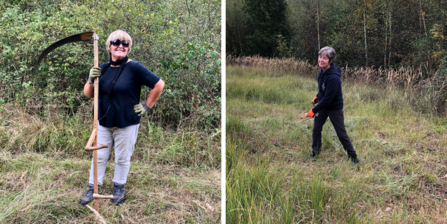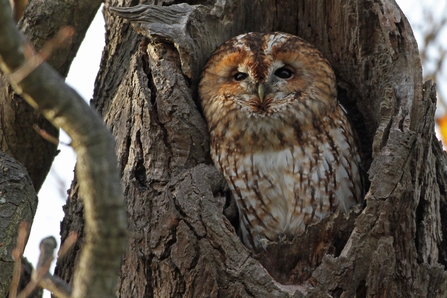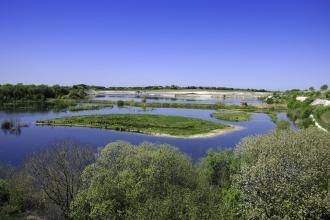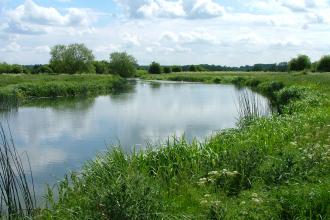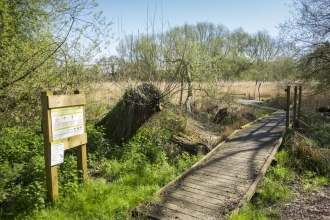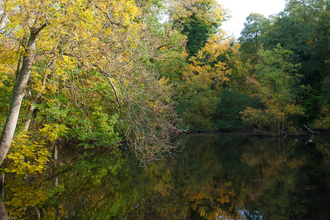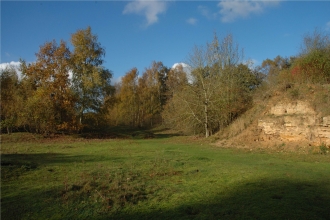The long, hot summer sun has been replaced by the golden rays of autumnal sunshine. The leaves are turning: warm shades of red, yellow and brown adorn Finemere Wood.
And yet the summer work is not yet complete. With tractor operators out of action, the woodland workers have had to cut many of the grassy rides manually.
Luck would have it, that amongst us is David Richardson. A master of the scythe, David has, this year, taught many Finemere volunteers how to scythe safely and competently. He is clear in his instruction, patient with his learners, and always on hand for those needing a refresher.
This October he received a Volunteer Award for his outstanding contribution to BBOWT, and to Finemere Wood in particular. A committed and invaluable member since 2016, he has barely missed a gathering, come rain or shine. This award is well deserved.
David is a skilled woodturner, wood carver, and all-round talented craftsman. Keen to make use of the trees that are cut down, he creates beautiful things from Finemere oak, such as bowls and chopping boards. Donations are made by members of the team, in return for possession of one of these greatly desirable works of art. The money raised is used to buy more scythes.


